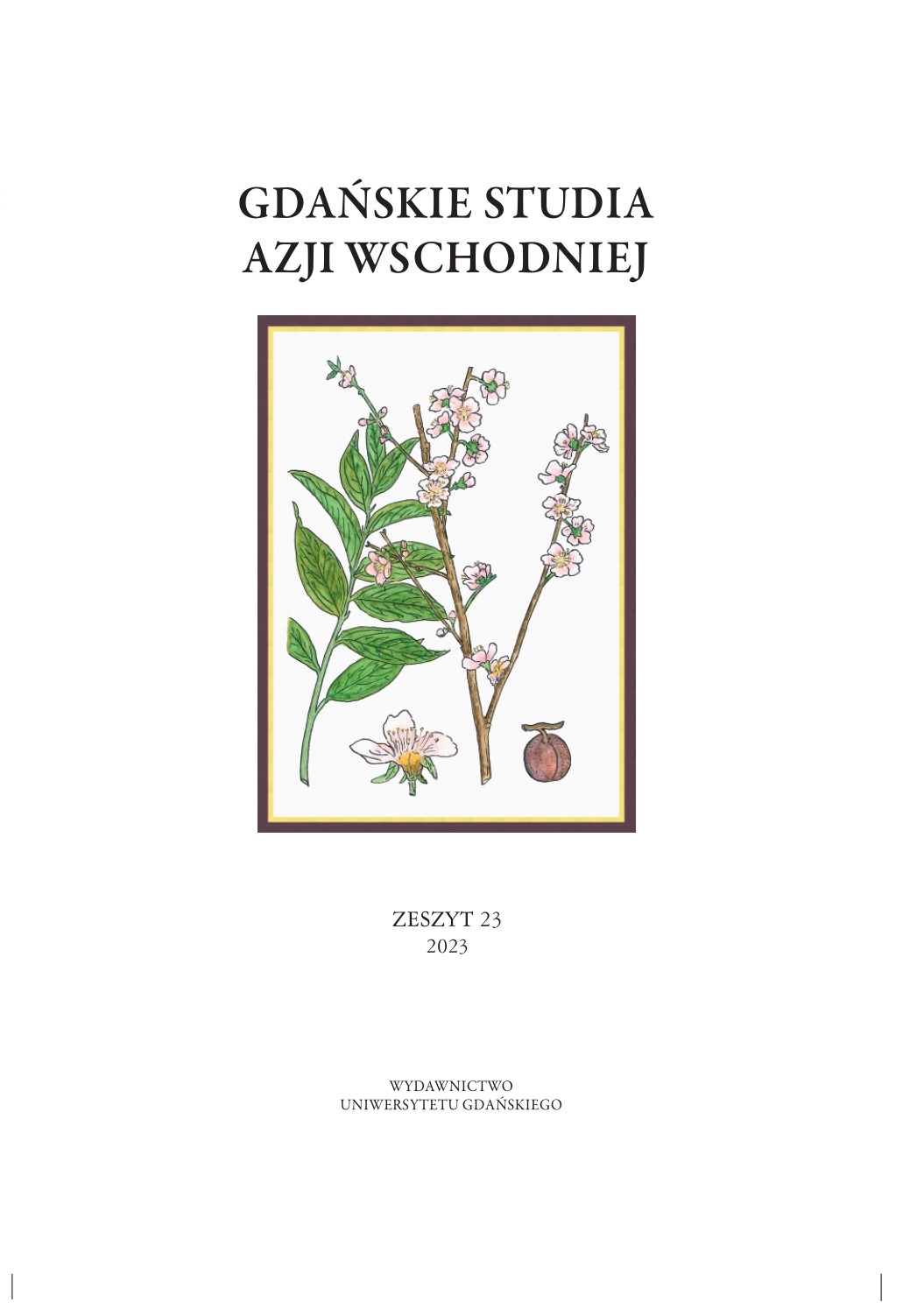Pakistan – w kierunku triady jądrowej
Abstrakt
Pakistan’s political history since independence has been marked by periods of political, military, and economic instability. The Kashmir conflict remains a major point of contention between Pakistan and India. Therefore, Pakistan’s main reason for building nuclear weapons was as a deterrent against Indian conventional forces and a desire to gain a leading role in the Islamic world.
The assessment of Pakistan’s nuclear potential is very difficult due to limited information and lack of transparency on the part of military circles. While all nuclear-weapon states generally aim to lower their capabilities, Pakistan, on the contrary, is developing its nuclear capabilities and is currently projected to have around 165 nuclear warheads. Pakistan’s nuclear policy is to have a full spectrum of nuclear weapons from tactical nuclear weapons to strategic ballistic missiles.
The main task of Pakistan’s nuclear arsenal is deterrence. Pakistan’s nuclear doctrine is intended firstly to deter India from aggression against Pakistan and secondly to prevent India from being victorious in the event of war. The basis of the doctrine of the Pakistani armed forces is the current concept of offensive defense, which assumes conducting a counterattack, the purpose of which will be to transfer a possible armed conflict to the enemy’s territory.
Downloads
Bibliografia
Ababeel, Missile Threat, 31.07.2021, https://missilethreat.csis.org/missile/ababeel/ (dostęp: 12.02.2023).
Abbas S.A., Pakistan’s Strategic Forces Command Structure and Responsibilities, 30.11.2021, https://defensetalks.com/pakistans-strategic-forces-command-structure-and-responsibilities/ (dostęp: 1.03.2023).
Abdali-I (Hatf-2), https://en.wikipedia.org/wiki/Abdali-I (dostęp: 2.02.2023).
Abdullah S., Pakistan’s Full-Spectrum Deterrence: Trends and Trajectories, 13.12.2018, https://southasianvoices.org/pakistan-full-spectrum-deterrence-trends-trajectories/ (dostęp: 2.03.2023).
Babur (Hatf-7), https://missilethreat.csis.org/missile/hatf-7/ (dostęp: 14.02.2023).
Center for Arms Control and Non-Proliferation, Pakistan’s Nuclear Inventory, https://armscontrolcenter.org/wp-content/uploads/2019/08/Pakistan.pdf (dostęp: 18.01.2023).
Chagai-I, https://military-history.fandom.com/wiki/Chagai-I (dostęp: 14.01.2023).
Fiszer M., Gruszczyński J., Siły Powietrzne Pakistanu, „Lotnictwo Aviation International” 2020, nr 1, https://zbiam.pl/artykuly/sily-powietrzne-pakistanu/ (dostęp: 23.02.2023).
Ghauri (Hatf-5), https://nuke.fas.org/guide/pakistan/missile/hatf-5.htm (dostęp: 11.02.2023).
Ghaznavi (Hatf 3), https://missilethreat.csis.org/missile/hatf-3/ (dostęp: 26.01.2023).
Hatf-8 Ra’ad ALCM, https://www.globalsecurity.org/wmd/world/pakistan/hatf-8.htm (dostęp: 24.02.2023).
Janes Fighting Ships: 2022–2023, ed. A. Pape, Jane’s Information Group, [b.m.] 2022.
Khan Z., Abbasi R., Pakistan’s Policy of Credible Minimum Deterrence, 12.07.2022, https://www. telegraphnepal.com/pakistans-policy-of-credible-minimum-deterrence/ (dostęp: 1.03.2023).
Kristensen H.M., Korda M., Nuclear Notebook: How many nuclear weapons does Pakistan have in 2021?, 7.09.2021, https://thebulletin.org/premium/2021-09/nuclear-notebook-how-many-nuclear- -weapons-does-pakistan-have-in-2021/(dostęp: 19.01.2023).
Kristensen H.M., Korda M., Pakistani nuclear weapons, 2021, „Bulletin of the Atomic Scientists” 2021, vol. 77, https://www.tandfonline.com/doi/full/10.1080/00963402.2021.1964258 (dostęp: 26.01.2023).
Michałek M., Pakistan – islamska bomba atomowa, 14.11.2011, https://psz.pl/117-polityka/pakistan-islamska-bomba-atomowa (dostęp: 6.03.2023).
Mills C., Nuclear weapons at a glance: India and Pakistan, 29.07.2022, https://commonslibrary.parliament.uk/research-briefings/cbp-9070/ (dostęp: 6.03.2023).
Missile Defense Project, Pakistan Conducts First Test of Submarine-Launched “Babur-3” Cruise Missile, 10.01.2017, https://missilethreat.csis.org/pakistan-conducts-first-test-submarine-launchedbabur-3-cruise-missile/ (dostęp: 23.02.2023).
Missiles of Pakistan, June 2022, https://missilethreat.csis.org/country/pakistan/ (dostęp: 12.02.2023).
NASR (Hatf-9), https://missilethreat.csis.org/missile/hatf-9/ (dostęp: 12.02.2023).
Norris R.S., Abdul Qadeer Khan, https://www.britannica.com/biography/Abdul-Qadeer-Khan (dostęp: 14.01.2023).
Shaheen 1 (Hatf 4), https://missilethreat.csis.org/missile/hatf-4/ (dostęp: 2.02.2023).
Shaheen-II/Eagle-I/Hatf-6/Ghaznavi, https://www.globalsecurity.org/wmd/world/pakistan/shaheen-2.htm (dostęp: 10.02.2023).
Shaheen-III (Hatf-6), https://missilethreat.csis.org/missile/shaheen-3/ (dostęp: 10.02.2023).
Sublette C., Pakistan’s Nuclear Weapons Program 1998: The Year of Testing, September 2001, https:// nuclearweaponarchive.org/Pakistan/PakTests.html (dostęp: 18.01.2023).
Szopa M., Armie Świata: Siły Zbrojne Pakistanu, „Defence24”, 5.11.2021, https://defence24.pl/ sily-zbrojne/armie-swiata-sily-zbrojne-pakistanu (dostęp: 24.02.2023).
Tasleem S., Pakistan’s Nuclear Use Doctrine, June 2016, https://carnegieendowment.org/2016/06/ 30/pakistan-s-nuclear-use-doctrine-pub-63913 (dostęp: 6.03.2023).
Zarychta S., Broń jądrowa w kształtowaniu bezpieczeństwa 1945–2015, Wydawnictwo Bellona, Warszawa 2016.

 Uniwersyteckie Czasopisma Naukowe
Uniwersyteckie Czasopisma Naukowe





